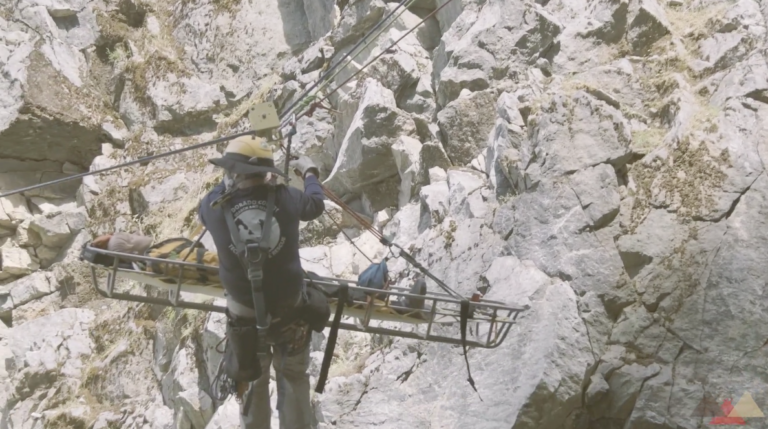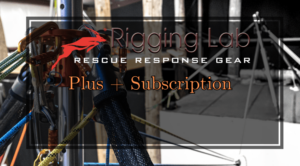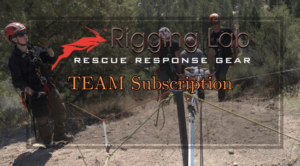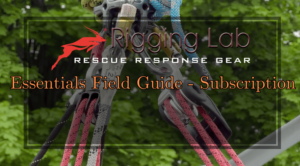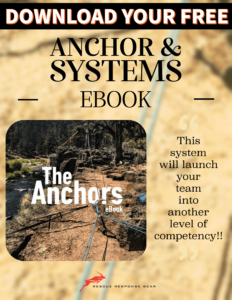High-Angle Rescues with Dual Rope Systems
High-Angle Rescues with Dual Rope Systems; precision and teamwork converge to tackle the multifaceted challenges of high-angle environments. The following recounts a compelling training scenario where adaptability and collaboration were pushed to the forefront, providing invaluable lessons for rescue teams.
The Rescue Scenario
The mission was clear: respond to an injured individual incapacitated by a fall in rugged terrain. The strategy hinged on a Two Tension Rope System (TTRS) for lowering a MedTech with a litter to the patient, followed by transitioning into a trackline operation for extraction. However, the absence of an Artificial High Directional (AHD) forced the team into a realm of improvisation, testing their collective ingenuity.
As the operation unfolded, the MedTech descended with a litter and additional ropes, battling the complexities of weight and terrain. Upon reaching the patient, a messenger line was deployed to the base team, establishing a critical connection for the subsequent trackline setup. Precision in tensioning ensured the trackline’s stability, facilitating a controlled and safe extraction. Despite the grueling physical demands of managing heavy ropes, the team’s synchronization shone through, culminating in a flawless descent to the designated landing zone.
Key Learnings and Takeaways
This operation underscored critical principles of effective high-angle rescue operations, particularly in challenging and resource-constrained scenarios:
- Strategic Planning
Comprehensive preparation, including a detailed SWOT (Strengths, Weaknesses, Opportunities, Threats) analysis, is essential. The team’s ability to anticipate obstacles and devise alternative solutions was instrumental in overcoming the absence of an AHD. - The Role of AHDs
While minimal use of an AHD was possible, its absence highlighted its value in smoothing operations and reducing rope friction. Teams must be adept at working both with and without AHDs, emphasizing versatility in their training. - System Selection and Adaptability
Rescue systems must align with the team’s expertise. Overcomplicating a setup can lead to inefficiencies or errors, while underestimating the team’s capabilities can result in missed opportunities for improved performance. - Leadership and Communication
The operation’s success hinged on clear leadership roles: topside leader, bottomside leader, and a scenario leader who oversaw the entire operation. This structure ensured coherent communication, swift decision-making, and a unified approach to tackling unforeseen challenges. - Physical and Mental Resilience
The weight and complexity of the rope system underscored the importance of physical preparedness. Simultaneously, the team’s ability to maintain focus under pressure highlighted the value of mental resilience in high-stakes scenarios.
A Valuable Lesson in Preparedness
Reflecting on the operation, the team identified areas for growth, including enhanced preparation for AHD deployment and refining communication protocols. These challenges, while taxing, reinforced the indispensable role of training, leadership, and adaptability in technical rescues.
This scenario served as a powerful reminder: no operation unfolds without its share of surprises. However, it is through these moments that teams strengthen their cohesion, refine their skills, and ultimately elevate their capacity to perform under pressure. High-angle rescues demand more than just technical prowess—they require trust, collaboration, and the ability to adapt when the unexpected arises.
Reference Links
- Rigging Lab Academy Courses:
Link to relevant high-angle rescue training and certification programs:
Rigging Lab Academy Training Courses - Rescue Response Gear:
Shop for gear like ropes, carabiners, and AHDs essential for high-angle rescues:
Rescue Response Gear Shop - Blog on Artificial High Directionals (AHDs):
A comprehensive look at the role of AHDs in rope rescue:
Understanding AHDs in Rope Rescue - SWOT Analysis for Rescue Teams:
Explore the importance of SWOT analysis in rescue operations:
SWOT Analysis for Rescue Teams - Team Leadership in Rope Rescue:
Learn more about leadership roles and strategies for technical rescue:
Leadership in Rope Rescue Teams - Technical Rope Systems Overview:
Dive deeper into Two Tension Rope Systems and their applications:
What is a TTRS?
Peace on your Days
Lance

